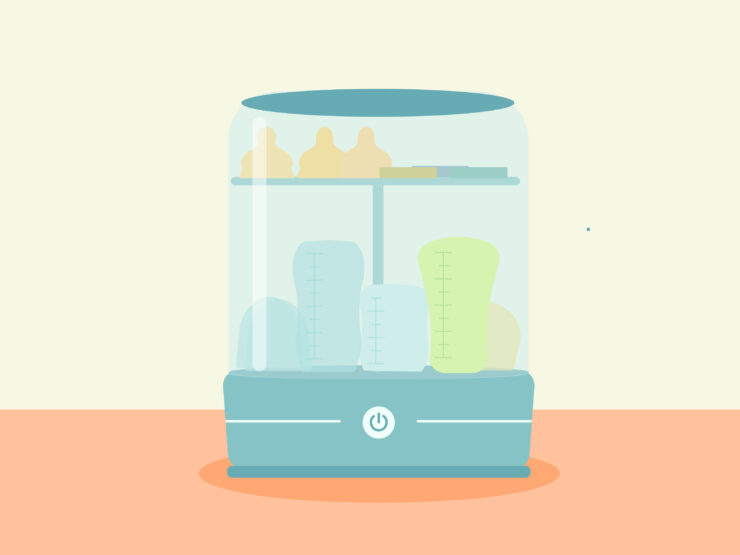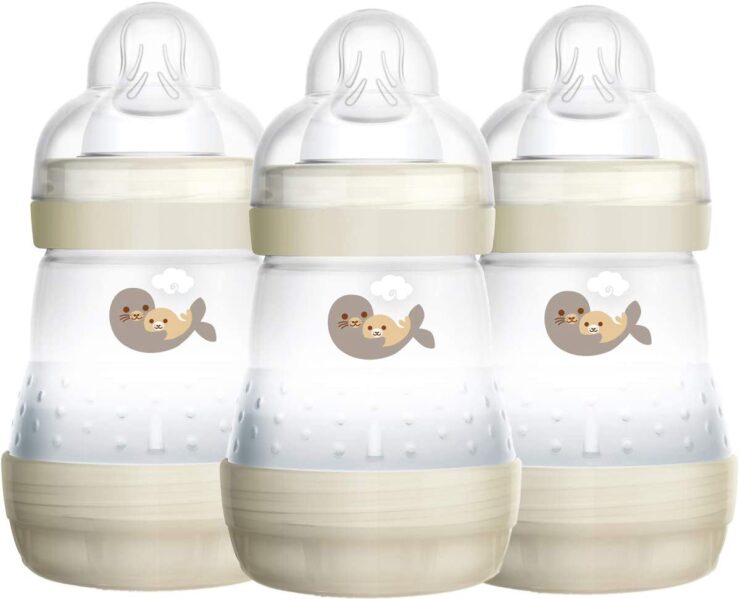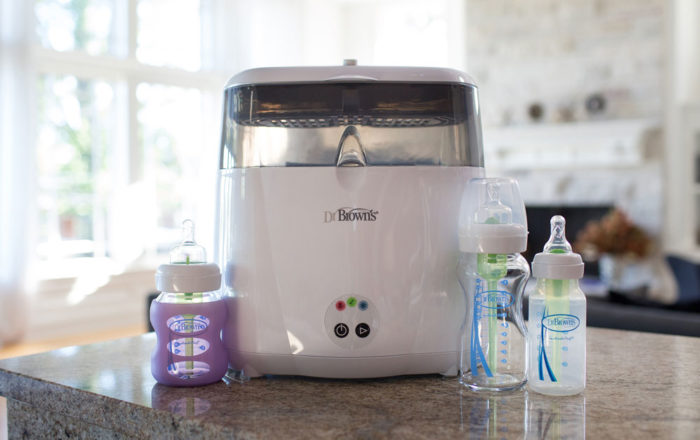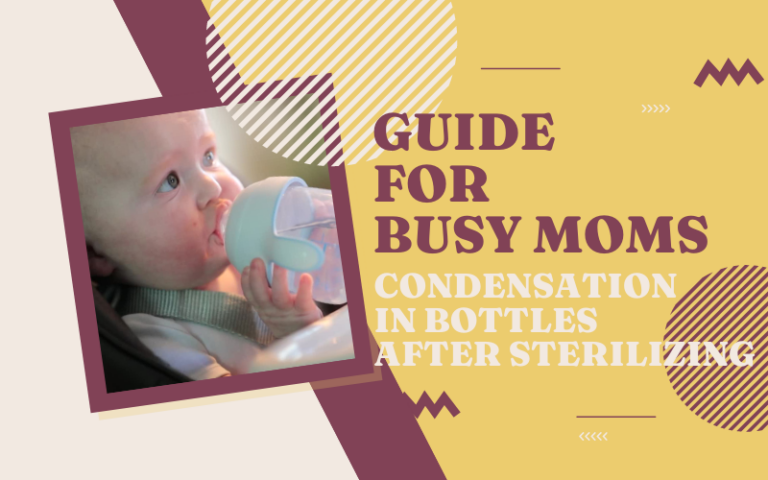One of the most common occurrences of feeding moms is condensation in bottles after sterilizing.
This usually refers to the droplets or remnants of water after a sterilization session.
Usually, this water is purified and doesn’t have any negative effect on your baby’s food. But most moms are usually afraid it might be contaminated.
Or worry it might prevent them from preparing their baby’s food the way they want. This is both normal and is one of the worries of parenthood.
In this article, you will learn:
- What condensation in bottles after sterilizing is
- What to do about it
- Determine whether or not it is harmful
What Is Condensation in Sterilised Baby Bottles?

Condensation is simply the droplets of water around the bottle due to washing.
Usually, when you clean your bottle, it may prevent you from putting powder formula in the bottle since it’s still wet.
Or even putting them away in the cupboard since you’d want them to be dry before doing that.
The most important benefit of sterilization is to kill bacteria that thrive in breast milk. This is why it’s important to clean the bottles thoroughly if you are not using sterilization.
That’s why some moms prefer using a dishwasher. This is because it has a higher temperature than handwashing, thus killing microorganisms that might spread to your baby’s food.
Another option is to put the bottle in the microwave. But only if you are not using a sterilizer and want to ensure all bacteria are killed.
Some moms are afraid of putting their baby bottles in the microwave for fear of melting the bottle. That should only occur if you leave it in for too long.
If you are afraid that it might cause any damage, you can boil the bottle instead, which is almost the same thing.
What if the Condensation Stays All Day?

With proper drying techniques, the water should dry out after some time. If you are washing it close to the middle of the day and want to use it for your baby milk or formula, you may see that it doesn’t dry fast enough.
But if you don’t need the bottle now, you can leave it to dry overnight and you wouldn’t worry too much.
Another important thing to note is that condensation can occur from the leftover of the sterilization itself.
But the truth is this blob of water won’t adulterate the taste. Nor will it affect the healthiness of the food you want to prepare for your baby.
That’s why you can prepare baby food with them immediately (if you are in a hurry). And don’t have to feel guilty for doing so.
As you probably know, you can wipe the water off with a tissue. But that isn’t always healthy or the best way to do things since the small drops of water in the bottle are in a safe and healthy state. Ready for your baby food to mix with it.
It should be noted that you don’t have to allow the baby bottle to be completely dry before putting breast milk in them. This is only advisable if you want to feed your baby within the same hour.
However, if you are trying to mix formula for your baby, then the case is different. Some moms complain that this does lead to clogging up the formula.
Solution? If you twirl the formula properly, all the blobs should go away.
What to Do When there Is Condensation in Bottles After Sterilizing

There are a lot of different ways you can dry the bottle or make it dry faster.
One of the best ways of doing that is to let the bottles dry on a drying rack.
There are many bottle drying racks on the market and most are designed to help with the condensation in bottles.
When you let the steam escape this way (and allow it enough time), it becomes easy for the baby bottles to dry properly.
Another thing about using a bottle rack is that they are quite affordable for the kind of benefit they come to offer you.
And you can find plenty of brands that you can compare so you can choose the best one.
It’s portable and doesn’t take up too much space on the counter.
Also, if you are a new mom, it’s important to note that many experienced moms use them. This is because they allow the bottle enough time to dry and they don’t interrupt with the usage too.
If you don’t already have the drying rack, you can find a clean area and turn the bottle upside down. Or you can put the bottle right side up so that the water comes scrolling down and the bottle can dry faster.
However, this still isn’t as effective and healthy as using a drying rack.
You can also leave the bottles in the sterilizer so they remain sterile. Or you can put the lid on the bottle so that airborne germs don’t get into it or store it in the fridge overnight for the same purpose. You can then use them in the morning.
Another way moms have found useful is to shake out the excess water from the bottle, taking care of the bottle not to slip out your hold. Even if you are going to put the bottles on a rack, you can still do this.
It will only remove the excess water faster.
Should You Be Worried?
Usually, if there is some droplet of water in the bottle, you shouldn’t be too worried about that since it isn’t going to contaminate the milk or the formula for your baby.
You can use the bottle while it’s still wet and you don’t have much to worry about since it is safe. Since the condensation is purified water, it is safe to use it in that state.
Another way of getting the condensation out if you really want is to leave the bottle to dry overnight. Usually, you don’t bother with this if you want to feed your baby from the bottle at some point, mostly before going to bed.
However, if there is no need to do that, you should put it away and let it dry overnight.
Knowing What to Avoid when Dealing with Condensation
Another thing you should be careful about is air-drying the bottles.
This can defeat the purpose of sterilizing itself. With air drying, you don’t know what may have gotten into the bottles in the way of airborne germs.
Remember that as long as you shake out the excess water from the bottle, it can be used to prepare your baby’s food.
If you need the bottle right away though, you can use a paper towel. However, using the paper towel can lead to contamination of the bottles since you didn’t sterilize the towel itself.
And that means it may carry germs, which can easily spread to the bottle.
Now you know what to do with condensation in bottles after sterilizing. Go ahead and give your baby that healthy food that’ll aid his/her growth.

